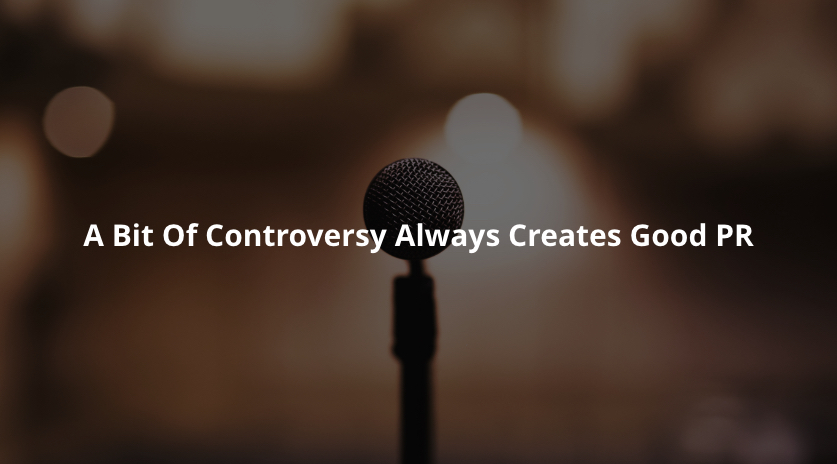If you want to get media coverage for your business, writing a press release is an essential skill. However, it can be tricky to know exactly how to do it. How long should it be, how should I format it, what information should I include? These are all common questions when it comes to writing a press release.
Never fear, though: Here’s our ultimate guide to writing a really good press release!
Make sure it’s news
You need to have something important to say. If you simply want to promote your product or services because you want to get more customers, you can’t just list features and benefits like you might do in an advert.
You need to find a newsworthy angle. Think about the people that you want to read your press release, and ask yourself whether they will find your story interesting. Does it contain anything new? Is there anything unusual about it? Most importantly, ask yourself: Will anyone outside of your business actually care?
What makes a story newsworthy?
Proximity: If a story is local to a reader, it will be of more interest to them than if it was happening somewhere else.
Prominence: Well-known people, places, or events have a stronger news angle than those that the audience isn’t familiar with.
Timeliness: Current news has more impact, so if you can comment on current news stories or get involved somehow, that’s newsworthy.
Oddity: If something is unusual, shocking, or bizarre, the strangeness alone could make it newsworthy.
Consequence: Readers want to know about events or stories that directly impact them.
Conflict: It’s human nature to take sides! Readers will always be interested in stories that contain arguments or disagreements.
Human Interest: If the story triggers any kind of emotional reaction, or is relatable for readers, it’s likely to be of interest.
Extremes: Journalists and readers like to know about the most and the least; the biggest and the smallest; the first and the last; the best and the worst. If you can use data to find an angle like this, you’re on to a winner.
Impact: The more people involved in a story, the more newsworthy it will be. A protest by 5,000 people is a lot more newsworthy than a protest by 10 people.
Scandal: We may not admit it, but everyone loves a bit of scandal and gossip!
Choose your targets carefully

When deciding whom you’re going to target with your press release, it’s important to be realistic. As interesting as your story is to you, the chances of a national publication running it on the first try are slim.
You’re much more likely to get printed by smaller publications, so don’t ignore the locals or trade magazines. Chances are, that’s what your target audience are reading anyway! Plus, the nationals often monitor the smaller publications to pick up on stories, so getting published locally with greatly increase your chance of getting picked up by a national.
Once you’ve decided whom you’re going to target, be sure to tailor your press release to those specific publications. If you’re targeting industry specific press, use that as your main focus. If you’re targeting generic local publications, emphasise the locality of your story.
How to structure a press release: the Inverted Pyramid
Knowing how to structure your press release can be crucial. You need to grab the attention of the journalist in the first few lines; otherwise they’re likely to stop reading before they get to the good bit. To help, you can use the inverted pyramid template.
- Start with a short, concise headline that tells the reader what the story is about;
- Paragraph 1 sums up the entire story in no more than two sentences;
- Paragraph 2 puts the story in context – explain why it’s important;
- Paragraph 3 gives more detail – who’s involved, how and why it happened, and when it occured etc;
- Paragraph 4 should be a quote from someone relevant, to add information, opinion, or credibility;
- Paragraph 5 gives more information. For example, where people can find more details, book tickets, make a purchase etc.
Follow this simple structure to get the main body of your press release spot on. In terms of layout, there are a few formatting norms that you should bear in mind:
- Use headed paper/document with the logo of the company in the top left corner.
- Mark the release date in the top right corner. Your story may be for immediate release, or it may be embargoed (secret) until a specific date. You can send your press release out early, but mark the publication date clearly.
- Include contact details for the journalist’s point of contact, including their email address and phone number. Make sure this is a specific person, rather than a generic info@ address or office number.
At the end of the main body of your press release, it’s good practice to include information to the editor. This will probably be background information that may not fit into your inverted pyramid, but will give context to your story – for example, the background of the business or previous newsworthy events that are relevant.
Writing a strong headline
Getting the headline right is absolutely crucial if you want to be in with a chance of publication. To get published, you first need the journalist to actually read your story, and they generally use headlines to decide whether a story is even worth looking at.
If it doesn’t grab their attention, chances are they’ll delete or throw away your press release without even reading it.
You don’t need to write a headline that would grab your audience’s attention. If you were doing the journalist’s job you’d want to come up with a headline that’s cryptic or clever, to draw the reader in.
However, when you’re sending a press release to a journalist, you should make your headline clean and concise, explaining exactly what the story is about. Let the journalist create the cryptic headline for publication.
Tip: Remember, when scanning headlines, most readers tend to focus on the first and last three words! So try to make sure that those six words work together to sum up your story.
For example, the headline of this blog is “how to write a really good press release.” Run together the first and last three words, and you get “how to write… good press release.” So you still get an idea of what the blog is about.
Include a good quality quote
Your quote could well be the part of the press release that makes the difference between being published or not. It should lend credibility to your article, and give an interesting insight or opinion.
Stay away from the trap of including a quote for the sake of it; it needs to actually add something to the story.
Quotes should do one or more of the following:
- Provide new information not previously seen in the press release
- Explain why the story might be of benefit to readers
- Give credibility if your product or service is otherwise unknown
- Express an opinion on an issue – even better if it’s controversial!
- Sound real and human, not like it’s been hashed together by someone in the PR department!
Include visual assets

All forms of media are becoming more and more visual, and where news is concerned, a lot of it is published online as opposed to traditional print.
You can increase your chances of getting published by including images, graphics, or video with your press release. It’s immediately more engaging for the journalist than just basic text, and they’ll be more willing to publish it, as they know their audience will appreciate it too.
Just be careful to make sure that your accompanying image is relevant to your press release! It’s not worth sending an image just for the sake of having one – it should add something to your story.
That’s it really; writing a press release really isn’t as difficult as it might seem at first. Remember to write in the first person, stick to one story per press release, and follow the advice and structure we’ve given above, and you should be gaining press coverage in no time.
Of course, if you’d like some help writing press releases and creating PR campaigns, that’s what we’re here for! Get in touch with us; we’d love to chat.

